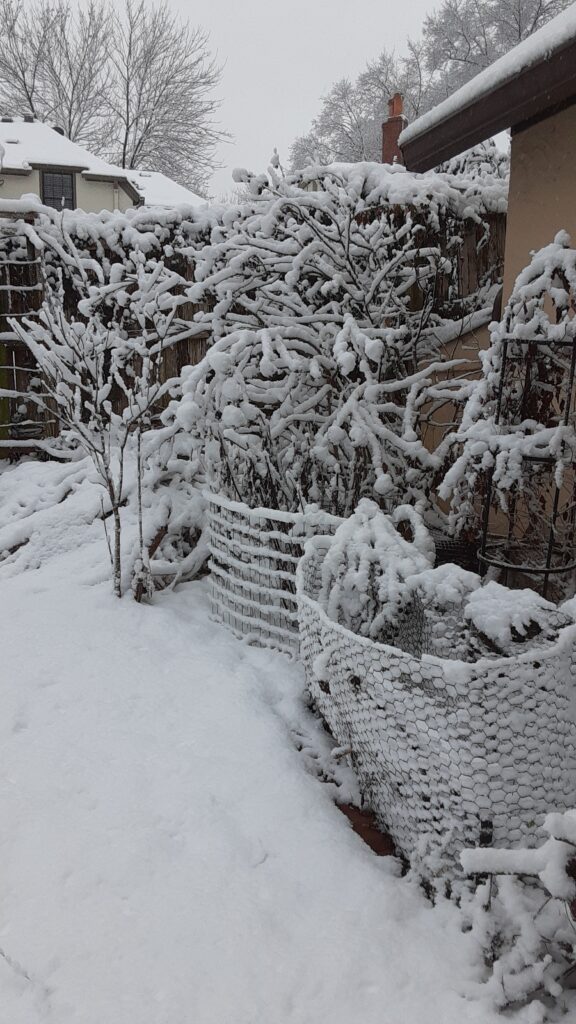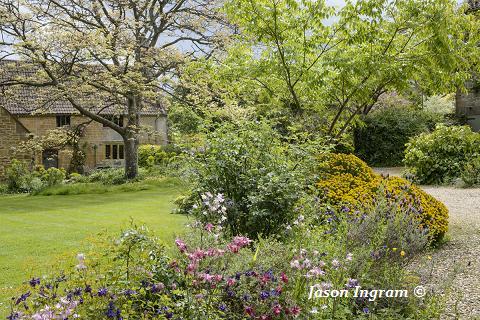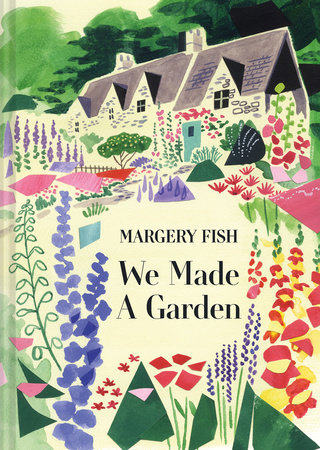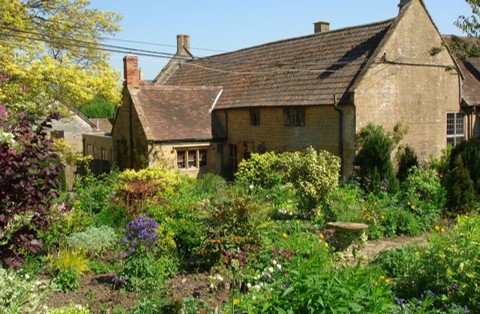Beginning in the early 2000’s, Michael Pollan began editing a paperback series of reissued garden classics for Modern Library. The success of Pollan’s first book, Second Nature: A Gardener’s Education (1991), prompted him to go deeper into garden writing, which he calls a “literary ghetto.” His immersion in “the minorness of a minor literature” enhanced his appreciation and whetted his desire for better books, ones “written in the sort of voice that is the literary equivalent of a chat over the back fence.” One of these is We Made a Garden, by Margery Fish, which I read last fall in anticipation of this day, when snow is falling and we’re all stuck inside, unable to do anything in our gardens except stare at them through windows. Perhaps you’re looking for something more interesting to read than seed catalogs? If so, read on.

As I read it, I took careful notes and saved photos, none of which I can find now, but here is what I remember.
Margery Fish was an English garden writer and columnist active in the nineteen-fifties and sixties who is credited with popularizing the cottage garden style. First published in 1956, We Made a Garden was her first book. She was 64 years old. She went on to public seven more. Her Gardening in the Shade (1964) is still considered a classic.

In the nineteen thirties, in addition to contributing articles to various publications, Margery worked as a secretary to editors of the Daily Mail. In 1933, she married her former boss, Walter Fish, a widower eighteen years her senior. With war looming, Walter decided they needed a place outside of London, so they bought a two-acre former farm in Somerset called East Lambrook Manor and set to work cleaning it up. When the war started, Walter returned to London to work in the Ministry of Information, so they split their time between the country and city.
Walter had created a garden in a different part of England with his first wife, and he imposes his ideas on Margery, who is a complete novice. Their styles clash. Walter enforces his opinions with gusto. Margery resents him—even though he is more knowledgeable than she is, at least at first. Walter loves big blooms, obvious colors, and tidy, weed-free beds of summer flowers. Her taste tends toward the sprawling, mounding, dripping, and self-seeding. She also likes extending the garden’s interest beyond summer, and later wrote a book called A Flower for Every Day. She describes what he likes, and then what she likes, and how she goes about trying to shape things to her liking despite him. He sabotages a couple plants. No doubt she does the same. Then he dies and she gets to have things the way she wants, eventually becoming an expert plants person and influential garden writer. Take that, Walter!

In addition to the drama, Fish does give practical tips (and occasionally devolves into lengthy lists of plants I am not knowledgeable enough to picture). One suggestion interested me. She says never to plant nepeta in the center of a bed. I have several mops of nepeta sprawling in prime spots, and this advice inspired me to divide them and plant them on the top of a retaining wall in hopes that they will spill over the rocks picturesquely. She also describes hiring a youth to roll their paths, presumably to smooth them out. I’d never heard of this before. She and Walter differ in their opinions about paths, no surprise. She wants little plants to grow between the stones, a look I love. Guess what Walter thinks of that.
The book is no longer listed on the Modern Library Garden Series website, but will be reissued by Rizzoli in June 2024. That’s good news if you want to read it, because it’s a little hard to find. I had to request a copy through interlibrary loan. Apparently, Margery’s East Lambrook Manor garden survives largely unchanged, and during the season it’s open to the public. Even more interesting, the property and its stone cottage are now for sale for a cool £2.2 million.

In our gardens, we express our ideas about nature and ourselves, our ideas about what’s good, and what we think is important. These ideas are always changing, and Fish was writing during a time when attitudes changed dramatically, not just about aesthetics and gardening, but about many things, including marriage, and men and women. Her championing an informal style accessible to average people can be seen as a reaction against conformity and uniformity, and as a criticism of conspicuous displays of wealth. She doesn’t talk about class or wealth, but we know how expensive those kinds of gardens are to maintain. As we read, her confidence increases and her store of knowledge grows. We Made a Garden is a story of female empowerment.
I’ll be back next week with thoughts about the other two books I read from the series, The Gardener’s Year, by Karel Capek, and Eleanor Perényi’s tart, opinionated Green Thoughts, which was my favorite of the three. Do you have a favorite garden book? If so, I’d love to hear about it. Thanks for reading.
Credits
Image of East Lambrook Manor Garden from Mansion Global, August 21, 2023
Quote from “Gardening” by Michael Pollan, Dec. 8, 1996
Image of Margery Fish from East Lambrook Manor Gardens website
https://www.eastlambrook.com/pages/site.php?pgid=72
Image of Margery Fish’s garden
https://www.greatbritishgardens.co.uk/margery-fish.html
Cover of We Made a Garden
Book
